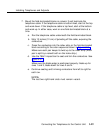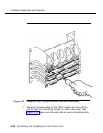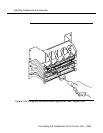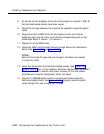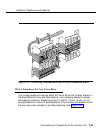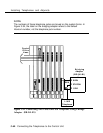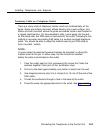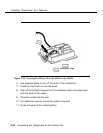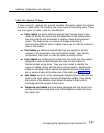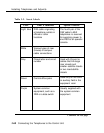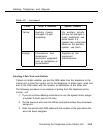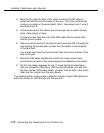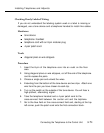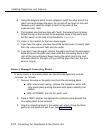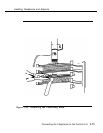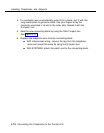
Installing Telephones and Adjuncts
Label the System Wiring
If done correctly, labeling can provide valuable information about the location
of wire or cable within the building and save hours of frustrating work. There
are five types of labels used for identification:
■ Cable labels are white adhesive-backed tabs that are stuck to the
cables to identify the source and the destination of the cables before
they are pulled to and terminated in satellite closets and equipment
rooms. The labels come in a variety of shapes and sizes to
accommodate different sizes of cable. Use a pen or a felt-tip marker to
write on the surface.
■ Field labels are adhesive-backed tabs that are applied to smooth
surfaces in the equipment room and satellite closets. They identify
components. Use a pen or a felt-tip marker to write on them.
■ Insert labels are cardboard-like strips that slip inside the clear plastic
designation strips located between the rows of a termination or
field-terminated wiring block. They are color-coded to identify the
origins of cables. Along with the color-coding scheme, alphanumeric
codes on the labels help to identify the specific location of the same
pair or series of pairs at the other end of the cable (see Table 3-2).
■ Jack labels are small, white, rectangular-shaped stick-on tabs that are
stuck to the cover plate or housing of telephone outlets. They identify
the location of the satellite closet where the cable to that outlet is
terminated and the number of the circuit.
■ Telephone cord labels are blue labels packaged with the control unit
carriers and wrap around each end of the telephone cords that leave
the control unit.
Connecting the Telephones to the Control Unit
3-67



